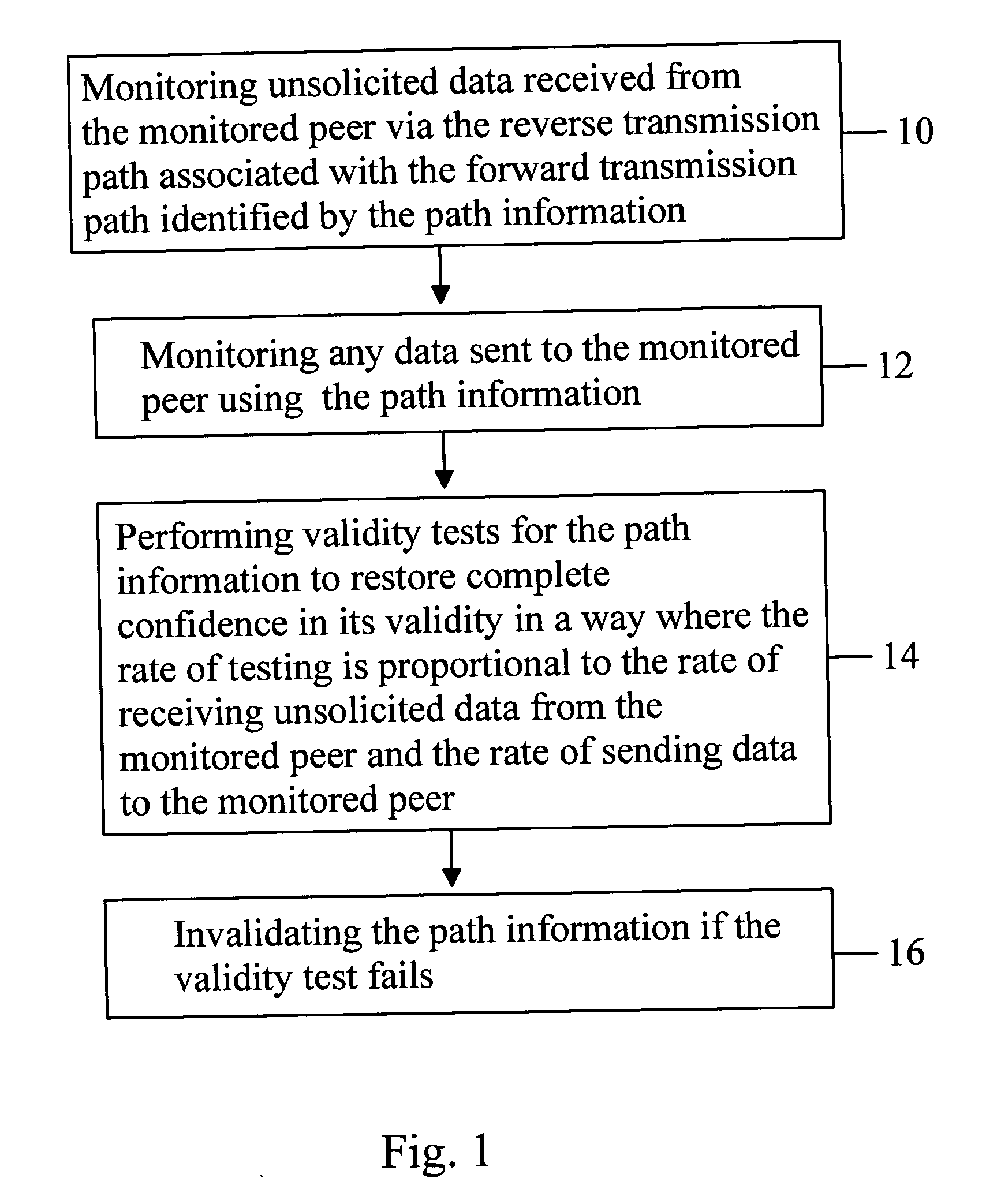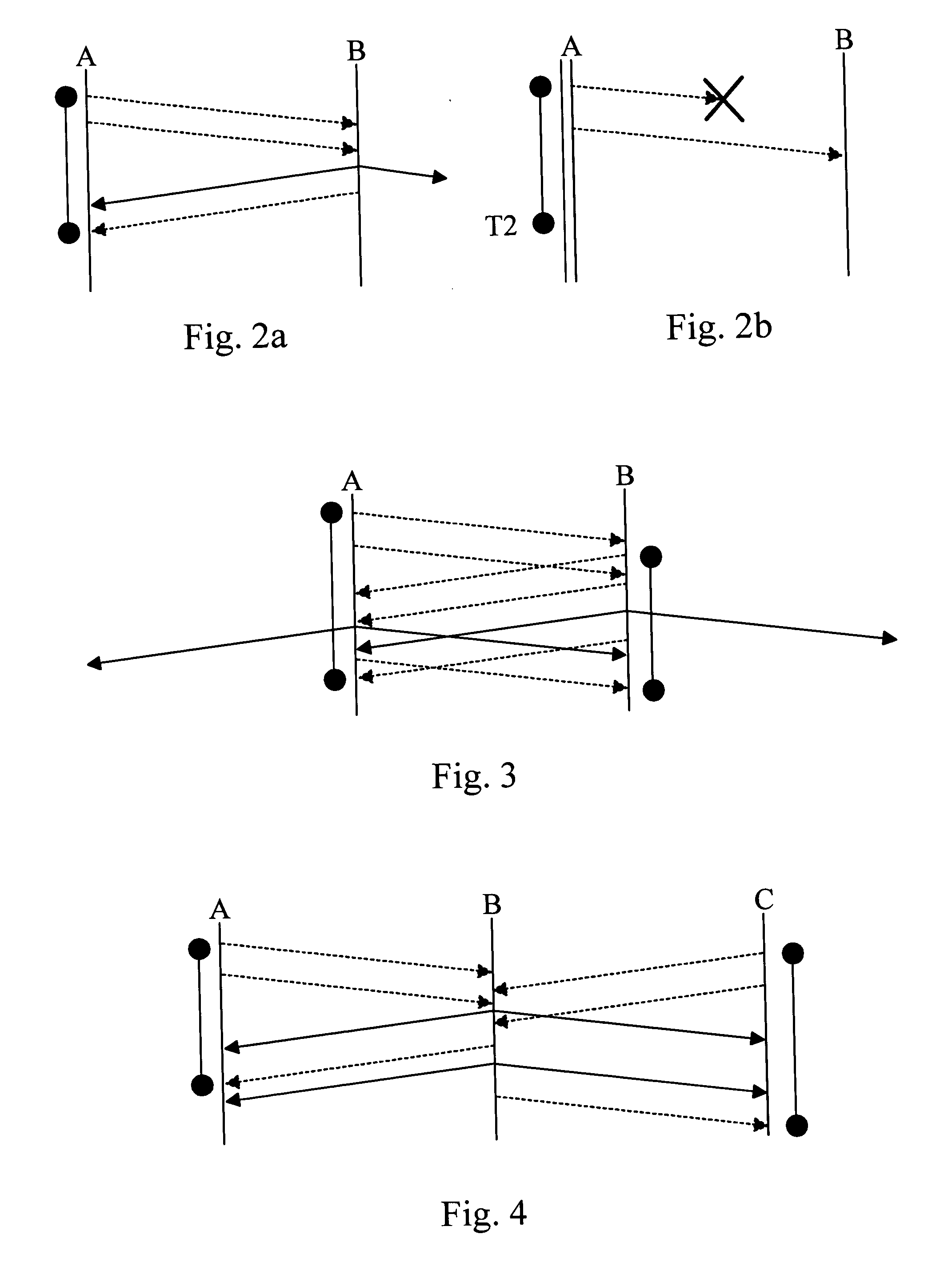Failure detection of path information corresponding to a transmission path
a technology of path information and transmission path, applied in the field of data communication systems, can solve the problems of path information becoming invalid, affecting the reliability of data acquisition, and extracting a cost in bandwidth then unavailable for user data, so as to reduce the frequency of refresh data, reduce the interference of refresh data with user bandwidth, and eliminate all redundancy
- Summary
- Abstract
- Description
- Claims
- Application Information
AI Technical Summary
Benefits of technology
Problems solved by technology
Method used
Image
Examples
Embodiment Construction
[0095] Reference will now be made in detail to the embodiments of the present invention, examples of which are illustrated in the accompanying drawings. Data packets dedicated for testing the path information validity are hereafter referred to as empty packets—meaning that the packets are empty of data, comprising only the header information. However, this is not a prerequisite for implementing the invention, merely an advantageous embodiment. The packets used for testing the path information validity can contain any amount of data allowed by the protocol that is used.
[0096]FIG. 1 discloses one embodiment of a method according to the invention. FIG. 1 discloses a method of determining validity of path information corresponding to a functional transmission path between a monitoring peer and a monitored peer in a data communication network. The monitoring peer monitors unsolicited data received from the monitored peer via the reverse transmission path associated with the forward tran...
PUM
 Login to View More
Login to View More Abstract
Description
Claims
Application Information
 Login to View More
Login to View More - R&D
- Intellectual Property
- Life Sciences
- Materials
- Tech Scout
- Unparalleled Data Quality
- Higher Quality Content
- 60% Fewer Hallucinations
Browse by: Latest US Patents, China's latest patents, Technical Efficacy Thesaurus, Application Domain, Technology Topic, Popular Technical Reports.
© 2025 PatSnap. All rights reserved.Legal|Privacy policy|Modern Slavery Act Transparency Statement|Sitemap|About US| Contact US: help@patsnap.com



